Holy Week: Kick it up a notch!
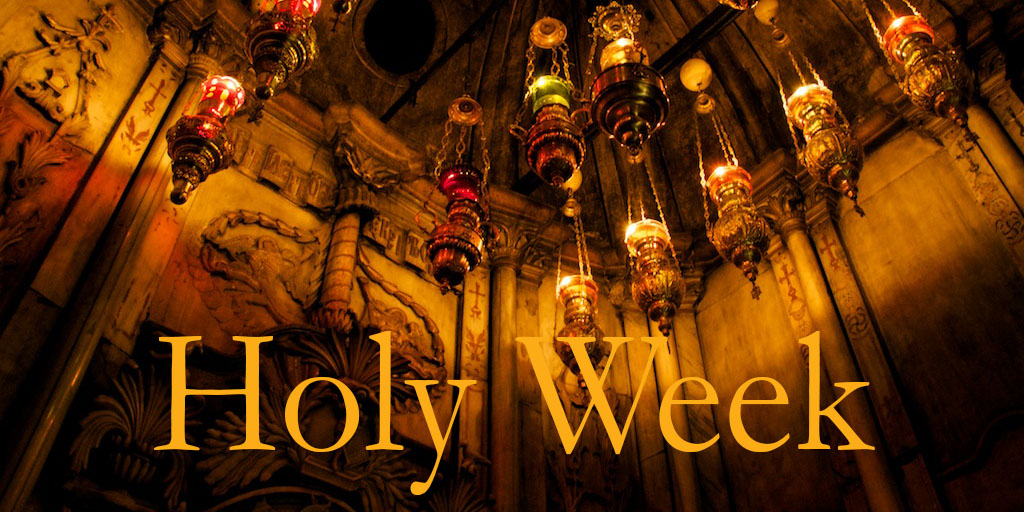
Today is the Feast of St. Cyril of Jerusalem (died March 18, 386), who is thought to be responsible for organizing the patterns of Holy Week liturgy much as we now know them. I’ve written a couple of Holy Week rants here over the years, but usually it’s during Holy Week. So this year, partly in honor of today’s feast, I thought I’d bust out of the pattern by getting my rant going slightly earlier. Perhaps it’s too late to make a difference, even if you’re inclined to find anything useful here, but maybe not.
As anyone who has spent any time whatsoever around me knows, I’m a huge Holy Week fan. I’ve been known to say that for Christians, the Triduum Sacrum (The Three Holy Days) is the most important time we can spend together in this earthly life. The liturgies of Maundy Thursday, Good Friday, and Easter Eve are always transformational for those who make the effort. The liturgies, if we do them well, are breathtaking.
For reasons I can’t always fathom, lots of clergy seem to want to “improve” the liturgies of Holy Week, often to make them more “creative.” I’m not sure what’s more creative than mystically transporting people to ancient Jerusalem, but your mileage may vary. Some of these unilateral “improvements” by fiat sound intriguing, and some are ghastly. But that’s quite beside the point. I’ve said before, and I’ll say it again, the authorized liturgies of our church are amazing and really don’t need us to dress them up. See my radical blog post from 2015 with the mind-boggling notion that we’d use the prayer book for Holy Week.
I won’t rehearse all those points, so I do encourage you to head over and have a look. Basically, my point is that we should trust our liturgies to do their job.
This year, I thought I’d try to vary my rant a bit. The title is Kick it up a notch, but it could just as easily have been Go big or go home.
Palm Sunday
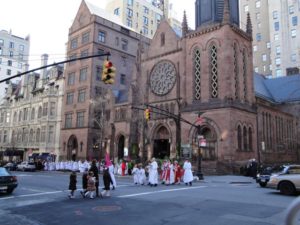 This is one of the great evangelistic liturgies of the church year. Even slightly churched people have some vague idea that this Sunday is important and that it involves getting something at church. It’s the liturgical equivalent of Free Cap Night or T-Shirt Day at the ballpark. So if you’re inclined to advertise, this is a great time to do it. Palm Sunday is often one of the most well-attended Sundays in congregations. Work hard on your printed notices, bulletin boards, signs, and greeters. Make connections. Invite relationship. Be welcoming in Christ’s name.
This is one of the great evangelistic liturgies of the church year. Even slightly churched people have some vague idea that this Sunday is important and that it involves getting something at church. It’s the liturgical equivalent of Free Cap Night or T-Shirt Day at the ballpark. So if you’re inclined to advertise, this is a great time to do it. Palm Sunday is often one of the most well-attended Sundays in congregations. Work hard on your printed notices, bulletin boards, signs, and greeters. Make connections. Invite relationship. Be welcoming in Christ’s name.
Now, some of you might be objecting that Palm Sunday is mostly a big downer, and so why would guests find this meaningful. Maybe people are, in fact, tired of the glitz and bling of our age and crave the truth that life is actually precarious and that God descends into the depths of our world, and even hell itself, to be in solidarity with us. Paul was on to something when he wrote about focusing on Christ and him crucified.
On a related note, there seems to be a growing notion to rob Palm Sunday of the Passion Gospel. People talk about wanting to read only the Palm Gospel. So in this view, we’d hear about Jesus’ triumphant entry into Jerusalem, but not his Passion. The idea is that we hear about Jesus’ Passion on Good Friday, so we shouldn’t hear it twice. Of course, it’s a different telling, and I’m not sure what the downside is of hearing the crux of the story two times a year. We also hear the Resurrection account twice (on Easter Eve and Easter Day), but, strangely, no one seems to complain about that.
The argument I find most problematic here is that it’s “jarring” to celebrate the triumphant entry and then hear the Passion Gospel. Yes, it is jarring, and that is precisely the point. Do we think Jesus’ followers weren’t shocked by the sudden turn of events? Do we Christians not see jarring changes in our own lives? If we can’t handle a jarring shift in Palm Sunday, how in the world are we to make sense of the front page of a newspaper? No, I think the tradition of the ancient church has it right: steer into the skid and let the abrupt change work on us. Perhaps if we can find God through this transition, we can find God in other jarring shifts.
Less compelling, but still true, I could point out that there’s no rubrical provision for mucking around with Palm Sunday. So doing this goes against the discipline of our church. If we want to provide the option of a passionless Palm Sunday, the route goes through General Convention. I’d be skeptical, because I think the desire to avoid the Cross speaks volumes about our desire for cheap grace over costly discipleship.
Brief digression, but not really. Order Eco-Palms. Regular Palm Sunday palms kill the planet. They’re awful. Do not use them. Use these instead.
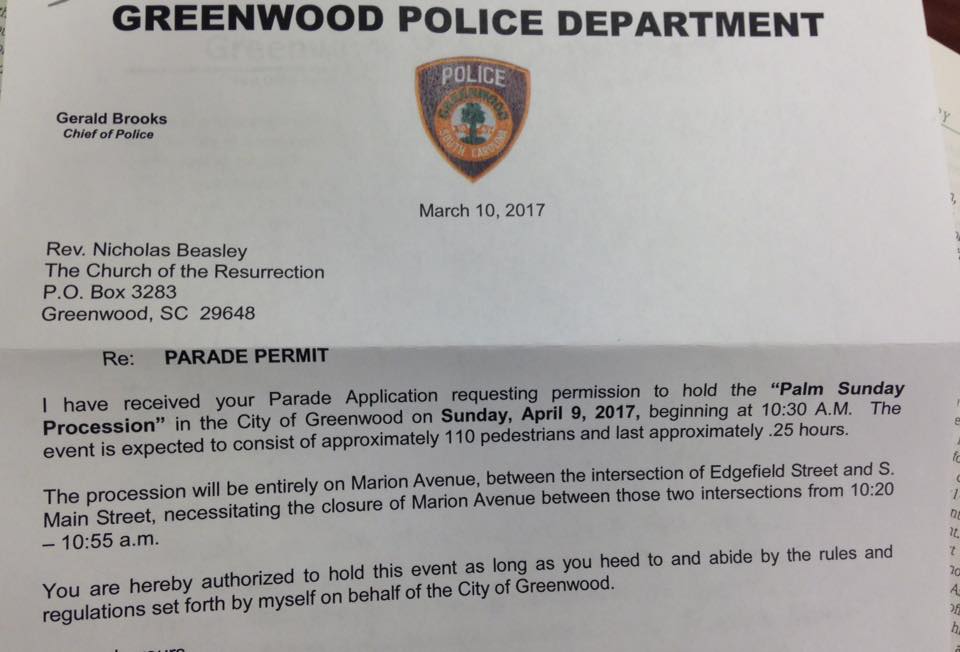
Oh, another thing, and this one’s more fun. Get out of the building! Here’a prime opportunity to be visible to the community. I give you the example of Church of the Resurrection in Greenwood, SC. Nicholas Beasley is rector there, and he writes on Facebook, “I’ve had it with wimpy Palm Sunday processions.” He’s getting a donkey, too. Now THAT is something that church members, guests, and community members will notice and remember. And, let’s face it, it’s kind of fun.
So how do kick Palm Sunday up a notch? Preach the Gospel using both gospels, passion and palm. Parade around in style. Welcome seekers and guests and rarely-attending members who show up. Have your A Game on, and offer connection to the wider, deeper life of the church: classes, service opportunities, social events, the works.
Maundy Thursday
I won’t say much more than I’ve said before, other than this. Going big on Maundy Thursday must surely include drawing people into the fullness of Maundy Thursday ritual. Getting people to have their feet washed (or washing others’ feet) takes some doing, because it is awkward at best and maybe deeply unsettling. That’s the point. It wasn’t any easier for Jesus and his followers. Read the Gospel! The congregation won’t just do this on their own. They’ll need encouragement, teaching, and perhaps some exhortation. But it’s worth it when it works.
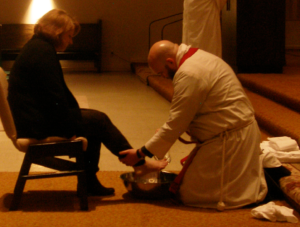 If you are in a place where the celebrant washes representatives’ feet, then do that well. But for the love of Christ (literally), don’t cheapen the ritual by swapping in hand-washing or something else easy and safe. Doing this just magnifies cheap grace.
If you are in a place where the celebrant washes representatives’ feet, then do that well. But for the love of Christ (literally), don’t cheapen the ritual by swapping in hand-washing or something else easy and safe. Doing this just magnifies cheap grace.
Assuming you strip the Altar, do that with solemnity and care. Go all in. As a parish priest, one of the most heartfelt moments for me each year was scrubbing the Altar at the end of the liturgy. It’s an act of great tenderness, which has little to do with the priest and everything to do with Jesus. People will get that if they see it.
I’m a huge fan of keeping vigil with reserved Blessed Sacrament, if your congregation offers the Mass of the Pre-sanctified (Communion from the Sacrament consecrated on Maundy Thursday) on Good Friday. Sure, it’s a bit of pain to get people to sign up to stay awake all night. Again, read the Gospel! This is not a new problem! But the devotion and care of offering this time for God’s glory and our delight is transformational.
Good Friday
Like our desire to skip the Cross on Palm Sunday, I’ve seen a lot of rationalizing here, ways to do anything but focus on the Cross and the Passion. Several elements of the traditional service are optional, and so you’ll get no grief from me if you skip some of the optional bits. But I do think the experience is enriched by offering the fullness of Good Friday.
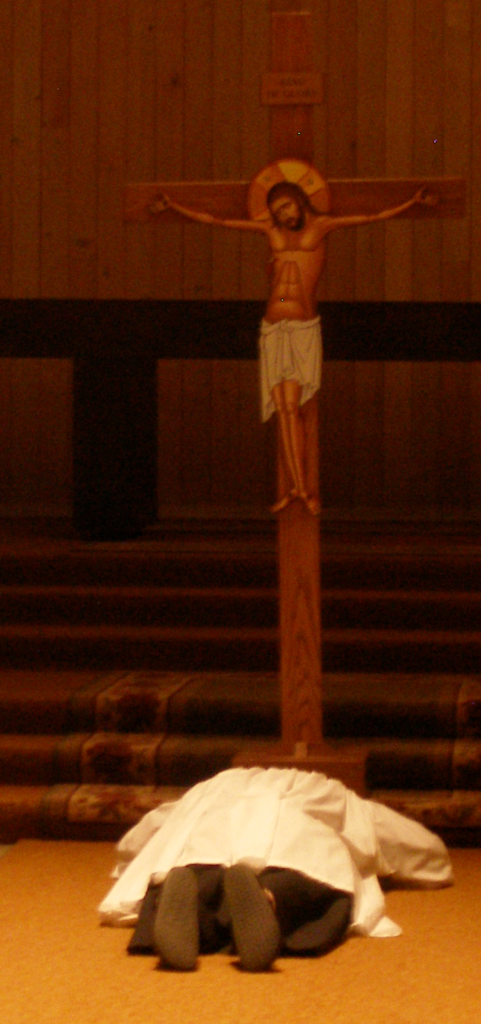 Inviting people to venerate the Cross, by touching or kissing it, is to invite a gesture of intimacy with an instrument of torture. And yet that very same object is instrumental in our salvation. To get up out of our pews and tangibly connect with the story in this way is mighty powerful, in my experience. I’ve heard the same from others.
Inviting people to venerate the Cross, by touching or kissing it, is to invite a gesture of intimacy with an instrument of torture. And yet that very same object is instrumental in our salvation. To get up out of our pews and tangibly connect with the story in this way is mighty powerful, in my experience. I’ve heard the same from others.
A congregation might provide flowers for people to lay at the Cross or perhaps at a burial icon. The juxtaposition of beauty and sorrow is breathtaking, and brings a new facet to the service (and one which does not compete with the prayer book or its tradition; rather, it brings in ancient Eastern tradition). This addition does not cheapen, but enriches, the experience. As I said above, your mileage may vary.
For what it’s worth, I feel somewhat differently about the custom of putting nails in a cross. In places which practice this, a large wooden cross is brought in, and then people hammer a nail into it. I know plenty of people swear by this, saying that it allows us to express our sinful rejection of Jesus. If that works, then who am I to blow against the wind? But I do think the church offers an app a sacrament for that in the rite of reconciliation.
But whatever we do, let’s not neglect to gaze at the cross, to hear the story in all its horror. This is how we can understand God’s great love for us — as we see that God suffered and died for us and our salvation. It also prepares us to celebrate Easter. If you skip from donkeys in a happy parade to Easter lilies, none of it makes sense.
So going big on Good Friday means drawing ourselves into the mystery, the wonder, the horror, and the gift of the Cross.
Holy Saturday
There’s a brief little service for Holy Saturday. Do it. The small number of people who come will love it. Check page 283 of your prayer book.
Easter Eve
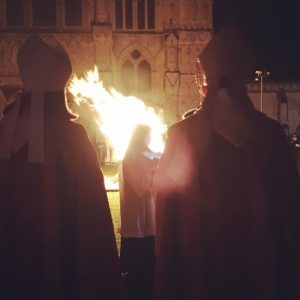 It is not permitted by the rubrics to start this service before sundown. There’s a good reason for this particular rule. The Easter Fire is completely awesome if it is kindled in complete darkness. It is a weak symbol if you can read your service leaflet by ambient light before you light the fire. Yep, it’s a pain to light this great fire in the dark, even more-so if you take the gonzo approach and use a flint instead of a match. But wow. Seeing a fire pierce the darkness is a, ahem, brilliant symbol. You can do this outdoors (late at night or before sunrise early in the morning), or it can be done in a church in the dark. Some places kindle the fire in a part of the church where it’s possible to mask off the windows if dusk light is still coming in. But having total darkness is well worth it.
It is not permitted by the rubrics to start this service before sundown. There’s a good reason for this particular rule. The Easter Fire is completely awesome if it is kindled in complete darkness. It is a weak symbol if you can read your service leaflet by ambient light before you light the fire. Yep, it’s a pain to light this great fire in the dark, even more-so if you take the gonzo approach and use a flint instead of a match. But wow. Seeing a fire pierce the darkness is a, ahem, brilliant symbol. You can do this outdoors (late at night or before sunrise early in the morning), or it can be done in a church in the dark. Some places kindle the fire in a part of the church where it’s possible to mask off the windows if dusk light is still coming in. But having total darkness is well worth it.
Pro tip: I learned this one the hard way. Back in my parish priest days, someone in the church I was serving had a panic attack one year when we lit the fire. So after that, I’d have the lights on very dimly before the service. I’d come out, welcome people (lots of guests, because baptisms!) and explain that the fire would be carefully controlled and a person with a fire extinguisher would be standing right next to me when I lit the fire. I also cautioned people not to get their candles too close to others’ hair. Then we’d turn off all the lights and begin the service after a couple minutes’ silence. So a bit of logistics and hospitality up front helped. No more panic attacks.
Pro tip #2: Make sure your smoke detectors are not going to be triggered. It’s not all that cool when the fire department shows up during the Exsultet. Or so I’ve heard.
Do lots of readings. Seriously, no one is going to care if you do three or five or whatever. The liturgy is so awesome that people will be glad to be there. Candlelight is really lovely here. It kills me when I see churches with lots of lights turned on during the vigil for reasons surpassing understanding. A church bathed in pure candlelight is a thin place, beautiful in every way. If the worry is readers’ vision, have an acolyte stand next to the lectors with a candle. It works. Then when you flip the lights on with the Easter Proclamation, wow.
I was in a church one year that had the Altar covered in purple silk during the vigil readings. When the organist began the improvisation after the Easter Proclamation — music to cover the lighting of candles and such — a server yanked the purple off to reveal resplendent gold silk for Easter. An army of people arrived with lilies while another army lit candles everywhere. It was splendid.
A few years ago, I went to an Easter Vigil in a big church. It was mostly amazing, but the sermon was about an elephant. I honestly have no idea if the preacher understood why we were all sitting there. Don’t be like that. The sermon should be about Easter, and busy preachers always have the option to read the Easter Homily of St. John Chrysostom (which says everything that needs to be said) if it seems too demanding to produce great sermons for both the Easter Vigil and Easter Day.
Another time, I went to an Easter Vigil at a different big church. They mucked around with the liturgy such that the packed church was hearing a homespun Eucharistic prayer. What the…? Then in another bout of creative nuttiness, they did not read a Gospel before the Eucharist, but rather read the Gospel after the postcommunion prayer, Mark’s Easter Gospel with the short ending. So people left the Easter Vigil with the last words they’d hear being, “So they went out and fled from the tomb, for terror and amazement had seized them; and they said nothing to anyone, for they were afraid.” Um, no. Seriously, trust the liturgy.
Oh, and this is just a suggestion for people who haven’t tried doing the baptisms during the vigil, but candlelit baptisms are astounding. I used to tell families they were getting the best baptism date of the year, and I wasn’t lying. I’d tell the congregation and the families that our photographer (a parish volunteer) would be there to take beautiful photos of the candlelit baptism without a flash, so please don’t wreck the ambience with a flash. And no one ever did. We’d make new Christians by the light of fire. I can’t wait to get to do that again someday! (No Easter Vigil presiding is an occupational hazard of pamphlet ministry.)
Easter Day
Like with Palm Sunday, but more so, have your visitor A Game on. Fix all those signs and bulletin boards. Have enticing stuff in your leaflet to get people to think about being involved with your congregation. Get extra greeters scheduled, and then add more. Make sure regular members are on board with how important hospitality is…like, don’t tell new people to get out of “their” regular seats.
For reasons I can’t fathom, lots of places skip coffee hour on Easter Day. But you have more guests on this one day than every other Sunday combined! So lay on the hospitality thick. If not too many people come to coffee hour, that’s OK. The people who do come are likely to be eager for connection, so it’s a great way for clergy and lay leaders to meet guests. Having an Easter Egg hunt is a nice touch. (Seriously, don’t do this on Good Friday. I can’t even.)
I don’t need to tell you to go big on music or decoration. You’ve got that one covered already.
Here’s the one that’s perhaps most important, at least for clergy: PREACH. THE. STORY. I cannot tell you how many preachers climb into pulpits as if everyone sitting there knows the whole Easter story. Guess what, plenty of people know the story faintly if at all. Tell people how utterly, incomprehensibly amazing it is that God’s Love is stronger than death, that the powers of evil and fear could not contain God’s love. And if God’s love couldn’t be contained in ancient Jerusalem, it cannot be contained now. Jesus has rescued us from hell, from death, from sin, from fear. Wow. Preach that. You don’t have to be clever. Just preach about God raising Jesus from the dead (and not random stories about elephants).
Going big on Easter Sunday means recognizing that God’s grace is at work in people who show up for church once a year. Be welcoming, and make way for the Holy Spirit to get to work in their lives. Going big on Easter means preaching and celebrating in a way that indicates our belief and confidence in the most amazing thing to happen in all of history.
+
Much of what you read here I experienced as a parish priest in modest-sized congregations without deep pockets. Life-changing liturgy doesn’t need to cost a fortune or require a large staff. Volunteers and congregations offering their best to God’s glory can glimpse a bit of it in this earthly life, and that is a priceless gift beyond measure.
If we church leaders treat Holy Week as a thing to be checked off, as something that we imagine few people will experience, we’re really missing out. It’s worth pouring everything we have into it. It’s worth inviting people into this mystical journey of triumph, friendship, tenderness, betrayal, desolation, pain, death, grief, astonishment, and victory. It’s worth it because God is glorified, our faith is enriched, and people are drawn into a deeper relationship with our Lord. As we walk this journey together, following Jesus, the experience spills over into our whole lives, strengthening our entire journey as Jesus’ followers. Holy Week, holy indeed.
Images:
Holy Week banner: From the Aedicule at Church of the Holy Sepulchre, Jerusalem. Photo by yours truly (via flickr).
Palm Sunday: Palm Sunday procession at St. James, Madison Ave., NYC. Photo by Michael Dunne (via flickr).
Palm Sunday: Police letter with permission for procession. Photo by Nicholas Beasley (via Facebook).
Maundy Thursday: Fr. Jed Fox washes feet at Church of the Redeemer, Kenmore, WA. Photo by Church of the Redeemer (via flickr).
Good Friday: Good Friday service from Church of the Redeemer, Kenmore, WA. Photo by Church of the Redeemer (via flickr).
Easter Eve: Easter Fire at Salisbury Cathedral, England. Photo by yours truly (via Instagram).
Fond memories of the blaring horn, the flashing light and the firemen coming through the front door, while singing the Exsultet!
Hey, you outed me! I was going to pretend that happened under someone else’s watch. Anyway, you did a brilliant job of chanting the Exsultet under, shall we say, challenging circumstances. Hope you’re well these days!
Love all of this. Glad I have been in parishes and chaplaincies that do kick it up.
Thank you for this. Here in Aotearoa we have more (too much) flexibility, but it is good to be drawn back to the wealth of traditional resources. There is little need to invent new traditions when the existing ones offer such layered experience.
In my former parish in Canada, there was a longstanding tradition of installing the Christmas Crib inside the altar (turned around for the purpose). When a new honorary assistant and his wife joined the parish, they had been in the practice of setting up an Easter Garden each year. Lacking any other appropriate space, we took the same approach as the Crib, and installed the Easter Garden in pride of place within the altar.
Once we introduced the Easter Vigil, the next question was how to manage the Easter Garden during the redressing of the Sanctuary. The first year, we simply set it up after he conclusion of the Vigil. It worked, but . . .
So for year two, we set up the Easter Garden beforehand, and covered the altar with a burlap (think of pragmatic Lenten Array) cover (think rustic Laudian Frontal). When the burlap came off partway through the redressing of the Sanctuary, there was an audible gasp from the multi-parish congregation.
Being highly traditional does NOT mean that you cannot be creative and original. But creativity and originality are all the better for being rooted in tradition.
So, we’ve had a segment of our community at St. Michael & All Angels, Portland OR who have pushed for a Palm only service for years. As the Associate I don’t get the final say, but I’ve continued to make the argument you lay out here. I can’t actually find any evidence of the Palm/Passion combo being an “ancient” practice of the Church, however, and with the Orthodox and many other Protestant denominations following the Palm-only pattern I’m beginning to see the merits of their arguments. Please send help. Specifically, I’m looking for something to read on lectionary history and the decision to include a Passion on Palm Sunday and am not finding anything.
Good question. Hatchett’s Commentary on the American Prayer Book says that the earliest lectionaries for Palm Sunday used Matthew’s Passion. The same point is made in Kenneth Stevenson’s Jerusalem Revisited. My understanding from someone who recently heard Paul Bradshaw speak is that the Jerusalem pattern was to read the Palm Gospel (and maybe Passion?), because they were in the place to do the pilgrimage. But in most of the West the custom was to read Matthew’s Passion, and also others throughout the week. But the Bradshaw stuff is hearsay that I may be repeating incorrectly. I’ve ordered a couple of his books. Check Hatchett.
Hope that helps…
Nicely said, Scott. Gives me ideas for encouraging my small church to turn it up a notch!
Some sermons and writings seem to be coming right at your heart. This is one of those. For me, it is absolutely the best explanation of those sacred, mysterious, and glorious days and rituals ever. Fr. Gunn, as always, writes with clarity, humor, and brilliance. This one will be printed and kept.
Thanks for your kind word, Linda. I’d better be careful or they’ll go to my head.
Yes, Amen! I will pick just one nit. Unless you have one of those Easter Vigil Baptisms with lots of guests, put the sermon after the history of salvation and before the Great Alleluia. (The rubric allow this! look it up.) Faithful members of your congregation are not going to miss an Easter sermon, but this unique chance to preach on hope and trust in god in the dark moments just before dawn and then pay it off with the proclamation of Christ risen is unique and powerful.
I agree that placing the sermon there can be effective. For what it’s worth, I’d still preach about Easter and the Paschal Mystery, though differently, of course. Personally, I can’t imagine NOT preaching about the Resurrection at the vigil, regardless of sermon location.
Hi Scott!
I’m sending this brief non-message right now, just to get into your system. Later this evening I’ll post a real comment. Love your blog! (Now I have to go feed the dogs)
In your comments about Palm Sunday you reached in past my teeth and took the words right out of my mouth! I have always been opposed to a “passionless Palm Sunday” for the very reasons you put forth, not only because it is liturgically weak, but because it takes liberties with the Prayer Book which have not been granted by General Convention.
I have seen a “Palm Only” liturgy where the Eucharistic Gospel is about the Triumphal Entry and then, after the Post-Communion Prayer, the Passion Gospel is read. But, to me, this makes the Passion look like a non-essential, tacked-on extra.
The Crucifixion pervades every day of Holy Week, and it’s only fitting that we begin
that week with the Passion Gospel.